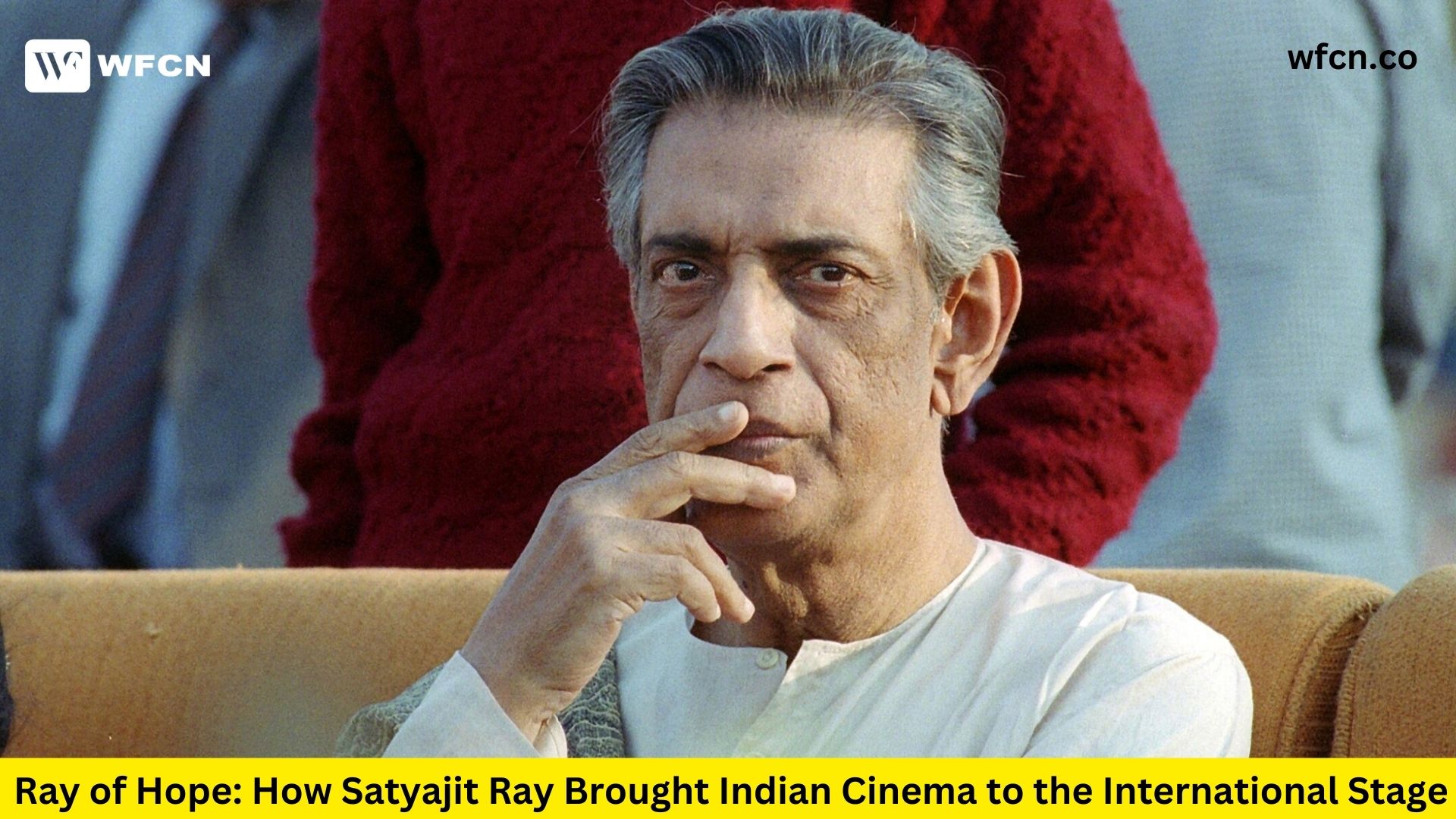Ray of Hope: How Satyajit Ray Brought Indian Cinema to the International Stage
Satyajit Ray wasn't just a filmmaker; he was a revolutionary force who redefined Indian cinema and catapulted regional films onto the world stage. His journey, however, wasn't paved with opulent sets and Bollywood grandeur. Ray's magic lay in capturing the essence of everyday life, primarily in his native Bengal, with an unparalleled depth and artistry that resonated with film audiences across continents.
The Cannes Coup and International Acclaim:
Ray's international acclaim began with his debut film, "Pather Panchali" (Song of the Little Road, 1955). This poignant coming-of-age story, set in rural Bengal, defied the conventions of mainstream Indian cinema at the time. Shot on a shoestring budget with a cast of mostly non-professionals, the film's raw beauty and universal themes of poverty, family, and childhood struck a chord at the 1956 Cannes Film Festival. "Pather Panchali" bagged the prestigious "Best Human Document" award, propelling Ray and Indian cinema into the global spotlight.
From Rural Realities to Urban Dilemmas:
Ray wasn't confined to rural film narratives. Films like "Aparajito" (The Unvanquished, 1956) and "Apur Sansar" (The World of Apu, 1959) formed the Apu Trilogy, tracing the protagonist's journey from childhood through education and disillusionment in an urban setting. "Charulata" (The Lonely Wife, 1964) explored themes of societal constraints and unspoken desires within a wealthy Calcutta household. These films showcased Ray's versatility, his ability to weave social commentary into captivating film narratives that transcended geographical boundaries.
Corporate Greed and the Power of Fantasy:
Ray wasn't afraid to delve into contemporary issues either. "Seemabaddha" (The Company Clerk, 1971) is a scathing critique of corporate culture and alienation, while "Jana Aranya" (The Middleman, 1979) examines the complexities of urban poverty. “Jalsaghar" (The Music Room, 1958) tackled the decline of a decaying aristocracy, a theme with global parallels. These films, with their nuanced portrayals of human emotions and social issues, transcended geographical boundaries. His foray into fantasy with Kanchenjungha (1962) showcased his masterful use of symbolism and allegory, while "Goopy Gyne Bagha Byne" (The Adventures of Goopy and Bagha, 1969) captured the hearts of film audiences with its whimsical exploration of mythical creatures and social satire.
Friendship with International Masters and The Oscar Nod:
Ray's dedication to his craft fostered a deep connection with international filmmakers. He collaborated with Italian maestro Vittorio De Sica and Japanese auteur Akira Kurosawa, forging creative friendships that transcended language. His influence resonated with renowned film directors like Martin Scorsese and Wes Anderson, solidifying his position as a global cinematic icon. Ray's genius was further acknowledged when he received the Lifetime Achievement Award at the 1992 Berlin International Film Festival, and an Honorary Oscar in 1992.
Masterful Storytelling and the Power of Music:
Ray's films weren't just visual feasts; they were a symphony of emotions brought to life by his meticulous attention to sound design and music. His long-standing collaboration with composer Ravi Shankar created soundtracks that perfectly complemented the film narratives. The haunting melody of the flute in "Pather Panchali" or the vibrant folk music in "Aranyer Din Ratri" (Days and Nights in the Forest, 1970) are testaments to the power of music in transcending language barriers and deepening the emotional resonance of his films.
A Legacy Etched in Celluloid:
Ray's films weren't merely entertainment; they were conversations about the human condition. He addressed universal themes of poverty, love, loss, societal pressures, and the yearning for freedom, themes that resonated with film audiences across cultural and socioeconomic divides. His films transcended the label of "regional cinema" and became universal stories, earning a permanent place in the global cinematic landscape.
Tagore in Ray’s Films
Satyajit Ray, a towering figure in Indian cinema, found deep inspiration in the works of Bengali literary giant Rabindranath Tagore. Ray's cinematic interpretations of Tagore's works brought global recognition to both the author and the filmmaker. In 1961, Ray's "Teen Kanya" (Three Daughters) wove together three of Tagore's short stories, showcasing the filmmaker's sensitive portrayal of female characters. This was followed by the masterpiece Charulata (1964), a nuanced adaptation of Tagore's novella "Nastanirh" (The Broken Nest). "Charulata" garnered international acclaim for its exploration of societal constraints and artistic yearning, winning numerous awards and solidifying Ray's place as a global auteur. Later, in 1984, Ray returned to Tagore with "Ghare Baire" (The Home and the World), a film that delves into themes of nationalism and personal choice against the backdrop of the Swadeshi movement. Through these films, Ray not only brought Tagore's timeless stories to life but also established himself as a master storyteller capable of resonating with film audiences worldwide.
The Enduring Legacy of Cannes:
Ray's journey at Cannes wasn't a one-off event. He returned to the film festival with several films, including "Mahanagar" (The Big City, 1963) and "Nayak" (The Hero, 1966), further solidifying his reputation as a master storyteller. His association with Cannes became a symbol of the recognition regional Indian cinema could achieve on an international platform, paving the way for future generations of filmmakers.
Ray's impact goes beyond mere awards and accolades. Satyajit Ray wasn't just a regional filmmaker who achieved global recognition. He was a pioneer who reshaped the landscape of world cinema. His films, with their universal themes, captivating film narratives, and masterful storytelling, continue to enthrall film audiences worldwide. He proved that a story told authentically, from the heart of a specific culture, could resonate with anyone, anywhere. Ray's legacy is a testament to the power of cinema to connect us all, transcending borders and languages to create a shared human experience.
He established that regional cinema could be as powerful and captivating as mainstream Hollywood productions. His films continue to inspire and challenge film audiences worldwide, a testament to his enduring legacy as a true alchemist who transformed regional stories into cinematic gold.





